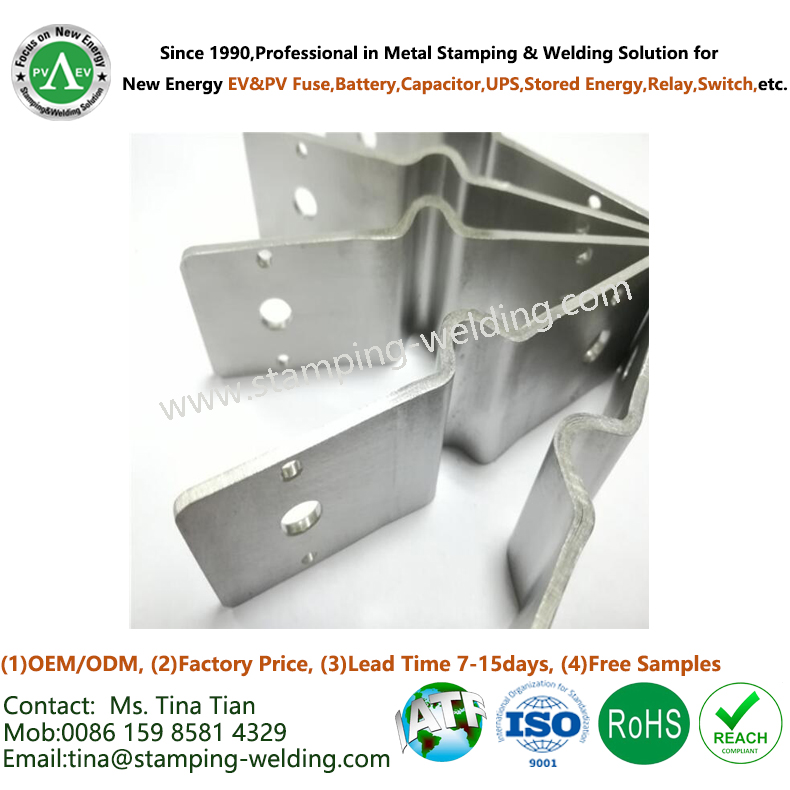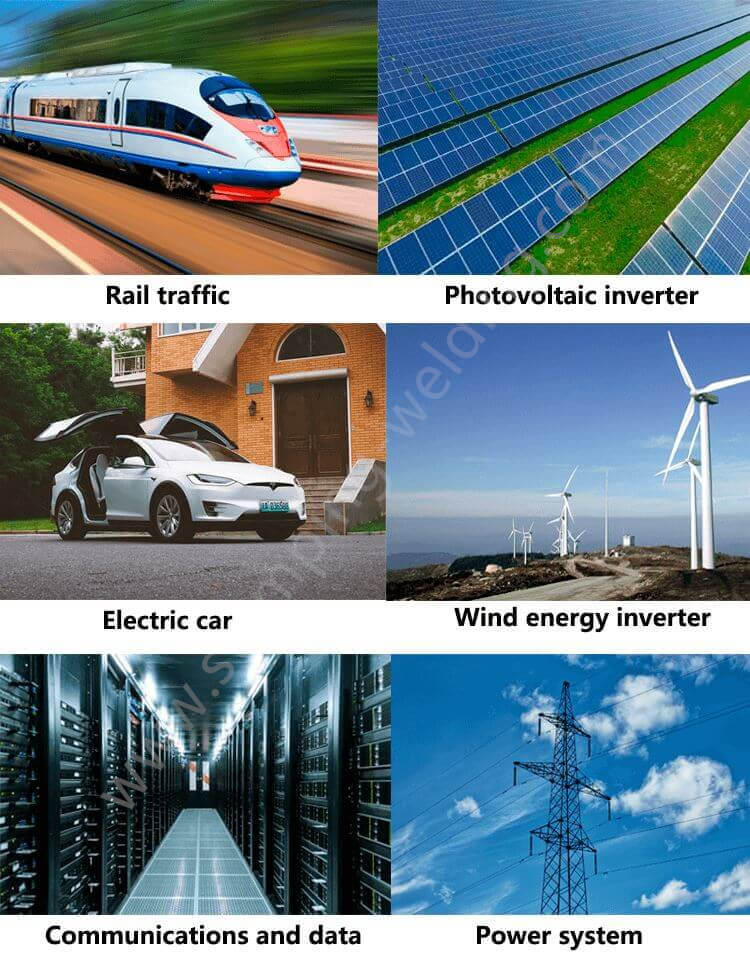

1- Products Name: Flexible Aluminium Connections for EV Battery
2- Base Material Standard:
Aluminum 6061
GB : T2Y2 Copper
DIN: E-Cu58 (Number: 2.0065)
EN: Cu-ETP ( Number: CW004A)
ISO: Cu-ETP
UNS: C11000
JIS: C1100
BS: C101
Purity ≥99.99% Copper, Conductivity %IACS≥97, Hardness 80~110HV, Tensile Strength 245-345MPa, other material also can be customized.
3-Surface Treatments:
(3.1) Silver plating
(3.2) Tin plating
(3.3) Nickel plating
(3.4) Ultrasonic cleaning
Normally plated thickness is 3μm to 12μm, but all upon customers' request.
4- Insulation Options:
(4.1) PET insulation paper (brands USA GTS, GERMANY KREMPEL, etc with white or milky white colors)
(4.2) PVC dipping (orange and green are the most popular colors)
(4.3) Epoxy powder coating (orange, green and grey are the most popular colors)
(4.4) PE heat shrink tube (orange, green, black, red are yellow are the most popular colors)
(4.5) PA66 plastic housing (white, grey etc are the most popular colors)
Flame Retardant / Fire Resistance: UL94-V-0 or upon you request;
Operating Temperature: -45ºC to +150 ºC
5- Copper Busbar Resistance: ≤0.00001Ω
6- Copper Busbar load voltage 3500VDC to 5000VDC and current 100A to 2000A
7- Copper Busbar Assembly Fixtures: USA PEM stainless nuts, studs, standoffs, screws, etc
8- Free Samples:1-10pcs is allowed
9- Lead Time:Orders 7-10days,Samples 10-20days(including the tooling/die production of Copper Stamped Part);
10- Packing: pearl cotton/blister box inside and carton/pallet outside
11- Certifications: ISO9001, IATF16949, RoHS, REACH, etc.
12- Production Capacity: 50,000,000 pcs/month
13- Applications: film capacitors for new energy electric vehicles and hybrid vehicles, new energy vehicle battery packs, new energy photovoltaic energy storage, power appliances, distribution cabinets, rail transit, cloud server uninterruptible power supplies and other power systems.
Flexible aluminum connections for EV (electric vehicle) batteries play a crucial role in ensuring efficient electrical connectivity within the vehicle's power system. Here's an overview of the key aspects related to the design and application of flexible aluminum connections in EV batteries:
1.Material Selection:
Aluminum is commonly used in flexible connections for EV batteries due to its lightweight nature and good conductivity. The flexibility of the connections allows for easier installation and accommodates the vibrations and movements typical in a vehicle environment.
2.Design for Flexibility:
The design of flexible aluminum connections takes into account the need for flexibility to accommodate vibrations, thermal expansion and contraction, and movements within the vehicle. This is especially important in EVs, where components may experience dynamic forces during operation.
3.Strand Configuration:
Flexible aluminum connections often consist of multiple strands or wires. The use of strands enhances flexibility and allows the connection to bend and flex without compromising conductivity.
4.Terminal Connections:
The flexible aluminum connections are designed with appropriate terminals for secure and reliable connections to the battery terminals, inverters, and other electrical components. Proper terminations are crucial to prevent issues such as overheating or poor electrical contact.
5.Temperature Resistance:
EV batteries can generate heat during operation. Flexible aluminum connections are designed to withstand elevated temperatures without significant degradation in performance. Heat-resistant insulation and materials may be used to ensure the connections can handle the thermal conditions within the battery system.
6.Corrosion Resistance:
Aluminum naturally forms a protective oxide layer, providing corrosion resistance. However, in automotive environments where exposure to various elements is common, additional protective coatings or treatments may be applied to enhance corrosion resistance.
7.Compliance with Standards:
Flexible aluminum connections for EV batteries should comply with relevant industry standards and safety regulations. Compliance ensures that the connections meet specified electrical and safety requirements for automotive applications.
8.Dynamic Stress Considerations:
The connections should be designed to withstand dynamic stresses, including mechanical vibrations and movements associated with vehicle operation. This requires careful consideration of the mechanical properties of the materials used.
9.Durability and Reliability:
Given the critical role of connections in the EV battery system, durability and reliability are paramount. Manufacturers conduct rigorous testing to ensure that flexible aluminum connections can withstand the demands of real-world usage.
10.Ease of Installation:
Flexible connections should be designed for ease of installation, considering factors such as accessibility within the vehicle, installation constraints, and serviceability.
11.Maintenance Considerations:
In some cases, accessibility for maintenance or replacement of components may be a consideration in the design of flexible aluminum connections. Ease of maintenance can contribute to the overall reliability of the EV.
The design and manufacturing of flexible aluminum connections for EV batteries involve a combination of material science, electrical engineering, and considerations specific to automotive applications. Manufacturers follow stringent quality control processes to produce connections that meet the demanding requirements of electric vehicles.

Contact Information:
Ms.Tina Tian (Sales Manager&Technology Engineer)
Xiamen Apollo Stamping Welding Technology Co., Ltd
Apollo Electronic Components (Xiamen) Co.,Ltd
Add: No.2, Chengyi North Road, Jimei Software Park, Jimei District, Xiamen City, Fujian Province, China, 361022
Mob/WhatsApp/WeChat: 0086-15985814329
Email: tina@stamping-welding.com
Web: www.stamping-welding.com , www.china-electronic-components.com
Since 2010, professional in Metal Stamping & Welding Solutions for New Energy EV & PV Fuse, Battery, Capactior, Relay, Switch, ect!